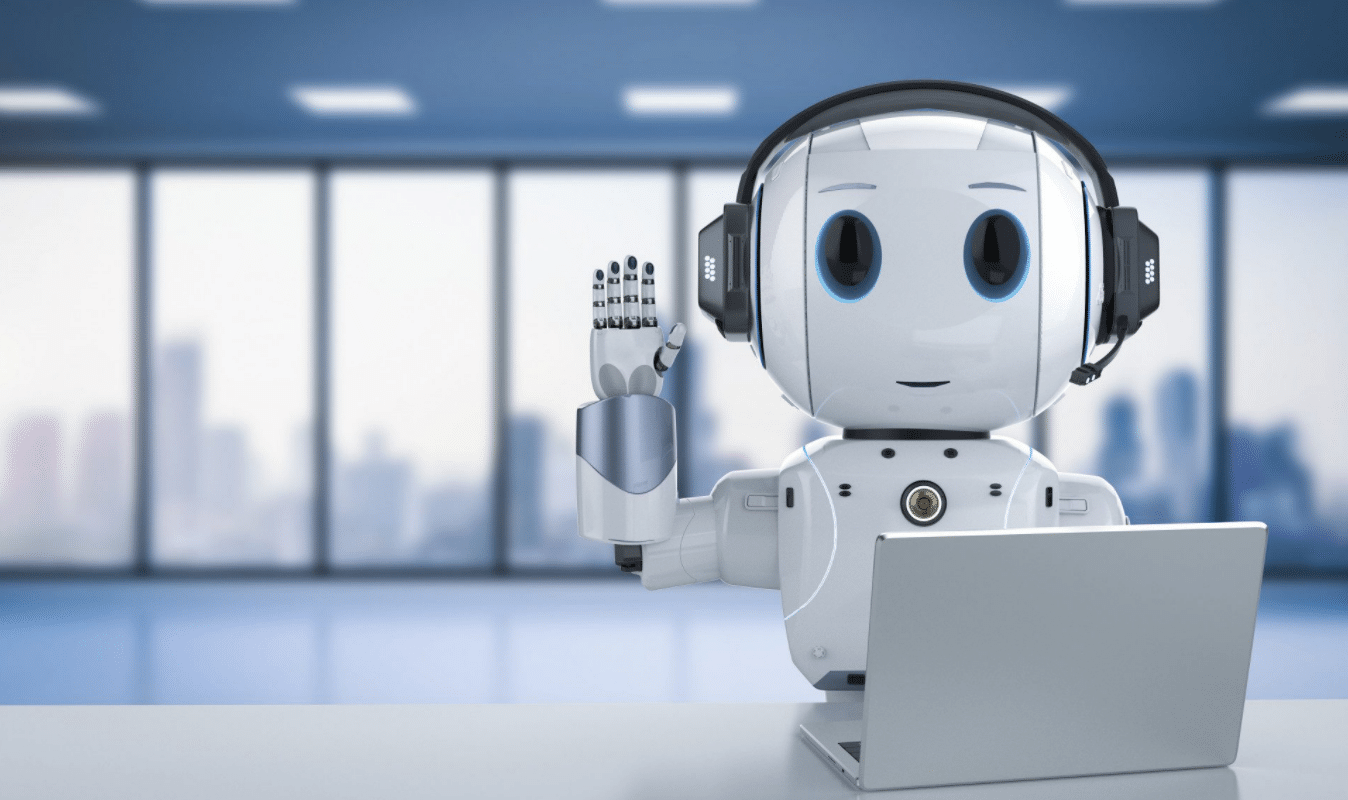Wednesday, April 26, 2023
Can Chatbot Write Code?
Coding chatbots are designed to help developers write code more efficiently by providing suggestions, code snippets, and other helpful tools. They use natural language processing (NLP) and machine learning algorithms to understand the intent and context of the developer's request, and then generate relevant code or suggestions based on that understanding.
One way in which coding chatbots can help developers is by providing suggestions for code completion. When a developer is typing out a line of code, the coding chatbot can analyze the syntax and context of the code and offer suggestions for the rest of the line or the entire block of code. This can help speed up the coding process and reduce errors.
Another way in which coding chatbots can be helpful is by providing code snippets for commonly used functions or tasks. For example, a chatbot designed for web development might provide a pre-written code snippet for creating a responsive navigation menu, saving the developer time and effort in writing the code from scratch.
Coding chatbots can also be used to automate repetitive tasks, such as generating boilerplate code for a new project or running tests on code changes. By automating these tasks, developers can focus on more complex and challenging aspects of the project.
One challenge in developing coding chatbots is ensuring that the generated code is accurate, efficient, and follows best practices. This requires a deep understanding of programming languages, algorithms, and software development practices, which can be challenging to incorporate into a chatbot's machine learning algorithms. Additionally, coding chatbots may struggle with more complex programming tasks that require creative problem-solving skills, which are difficult to automate.
Despite these challenges, coding chatbots have the potential to revolutionize the way developers work, by providing intelligent and efficient assistance with the coding process. They can help developers save time, reduce errors, and improve the quality of their code. As machine learning algorithms continue to improve, it is likely that we will see more advanced coding chatbots in the future, which will further enhance the capabilities of developers and accelerate software development.
Can Chatbot Be Detected?
Can ChatGPT Write Essays?
To write an essay, ChatGPT first needs to be provided with a prompt or topic to write about. This can be done by the user inputting a question, statement, or idea that serves as the starting point for the essay. Once the prompt is provided, ChatGPT uses its natural language processing capabilities and machine learning algorithms to generate a response.
In order to write an effective essay, ChatGPT needs to have a deep understanding of the topic at hand. This requires access to a large amount of knowledge and information on the topic, which can be obtained through various sources, including online databases, academic journals, and other reliable sources. ChatGPT can also use its machine learning capabilities to learn from past essays and other relevant texts, which can help improve the quality and coherence of its responses.
To write a high-quality essay, ChatGPT also needs to have a strong command of language and grammar. This involves understanding the rules of grammar, syntax, and style, as well as the nuances of language use and communication. ChatGPT has been trained on a vast corpus of texts, which includes a wide range of writing styles and genres. This allows it to generate text that is not only grammatically correct but also stylistically appropriate for the context and audience.
In addition to language and grammar, ChatGPT also needs to be able to structure its responses in a logical and coherent manner. This requires understanding the principles of essay structure, including the introduction, body, and conclusion. ChatGPT can use its machine learning capabilities to identify the key points to be addressed in each section of the essay, as well as the most effective ways to link these points together to form a cohesive argument or narrative.
Overall, ChatGPT has the capability to write high-quality essays on a wide range of topics. However, it is important to note that while ChatGPT can generate text that is grammatically correct and stylistically appropriate, it may not always be able to generate text that is accurate or relevant to the topic at hand. As with any automated system, it is important to review and edit the output generated by ChatGPT to ensure its accuracy and appropriateness for the intended audience and purpose.
26: ChatGPT
there's enough of a demand for coding to employ both humans and AI
.......... "There's only so much food that 7 billion people can eat" ........ "But it's unclear if there's any cap on the amount of software that humanity wants or needs. One way to think about it is that for the past 50 years, we have been massively underproducing. We haven't been meeting software demand." ........... AI, in other words, may help humans write code faster, but we'll still want all the humans around because we need as much software as they can build, as fast as they can build it. ......... all the productivity gains from AI will turbocharge the demand for software, making the coders of the future even more sought after than they are today. .............. Consider what happened to bank tellers after the widespread adoption of ATMs. You'd think ATMs would have destroyed the profession, but surprisingly, the number of bank tellers actually grew between 1980 and 2010. .......... "but you probably do want to formally verify code that goes into your driving assistant in your car or manages your insulin pump." If today's programmers are writers, the thinking goes, their future counterparts will be editors and fact-checkers. ............ those who make the transition to the AI-driven future will find themselves performing tasks that are radically different from the ones they do today. ......... The new technology essentially leveled the playing field between the newbies and the veterans. ......... I'm a writer because I love writing; I don't want my job to morph into one of fact-checking the hallucinogenic and error-prone tendencies of ChatGPT. ......... go back a few decades, and you'll find a technology that obliterated what was one of the most common jobs for young women: the mechanical switching of telephones. Placing your own calls on a rotary-dial phone was way faster and easier than going through a human switchboard operator. Many of the displaced operators dropped out of the workforce altogether — and if they kept working, they ended up in lower-paying occupations. ......... one of the most glaring problems with AI research: Far too much of it is focused on replacing human labor rather than empowering it. .......... "I really think everybody needs to be doing their work with ChatGPT as much as they can, so they can learn what it does and what it doesn't," Mollick says. "The key is thinking about how you work with the system. It's a centaur model: How do I get more work out of being half person, half horse? The best advice I have is to consider the bundle of tasks that you're facing and ask: How do I get good at the tasks that are less likely to be replaced by a machine?" ............... he's watched people try ChatGPT for a minute, find themselves underwhelmed by its abilities, and then move on, comforted by their superiority over AI. .Let's collaborate on my ChatGPT Literacy course. All your clients need it. Right now. Your 10% is built in.
— Paramendra Kumar Bhagat (@paramendra) April 26, 2023
Is that a yes? Can I email you? Andrew at acquire dot com?
— Paramendra Kumar Bhagat (@paramendra) April 26, 2023
Email sent. Please answer the questions and email them back. (For my tech blog Netizen.)
— Paramendra Kumar Bhagat (@paramendra) April 26, 2023
Idea!! Why don't I just ask you my questions right here on Twitter? !!
— Paramendra Kumar Bhagat (@paramendra) April 26, 2023
People in the ag sector think nobody in the service sector works. Are you moving mud? Nooooooo! :)
— Paramendra Kumar Bhagat (@paramendra) April 26, 2023
The number was generated by ChatGPT.
— Paramendra Kumar Bhagat (@paramendra) April 25, 2023
The mass & difficulty required to build a space habitat like that is extreme. Far better to have a base on the moon & city on Mars.
— Elon Musk (@elonmusk) April 25, 2023
Colonizing the ocean depths is easier yet not tried.
— Paramendra Kumar Bhagat (@paramendra) April 25, 2023
11.6 million Chinese college graduates this year will flood into an economy with 19.6% youth unemployment rate.
— Ryan Hass (@ryanl_hass) April 25, 2023
I hope the US finds ways to encourage bright Chinese students to come to US for graduate study, work; would generate windfall dividends. https://t.co/h2BfaWdf5L
Bing Chat is worst product rollout in history. Once in a lifetime opportunity wasted.
— Alex Graveley (@alexgraveley) April 25, 2023
One of the best use cases.
— Paramendra Kumar Bhagat (@paramendra) April 25, 2023
The two major leading candidates having a combined age of 159 in ‘24 is a clear sign of how sclerotic and dysfunctional our political system is.
— Andrew Yang🧢⬆️🇺🇸 (@AndrewYang) April 25, 2023
Love it. Unicorn Kingdom. https://t.co/tE0fyqHsEh
— Hussein Kanji (@hkanji) April 25, 2023
No, but in grad school I often walked out of the computer lab to see the sun rising.
— Paul Graham (@paulg) April 25, 2023
Today we hit a major milestone of $20K in MRR! 🥳🥳🥳🎉🎉
— Jacky Tan (@imbktan) April 25, 2023
It took us 21 months to reach $10K MRR and just 8 months to double it. pic.twitter.com/EaqnbdpRpO
My approach to raising a $50M VC fund in 8 weeks? Build 2-3 years into the future. Let me explain ⬇️
— Jeanine (@JeanineSuah) April 25, 2023
:)
— Paramendra Kumar Bhagat (@paramendra) April 26, 2023
A concept that changed my life.
— Sahil Bloom (@SahilBloom) April 23, 2023
The Time Billionaire: pic.twitter.com/ij3gKyCiGf
Last summer, I was on a walk with my newborn son when an older man approached me.
— Sahil Bloom (@SahilBloom) April 26, 2023
He said:
“I remember standing here with my newborn. An old man came up to me and said ‘It goes by fast, cherish it.’ Well, my daughter is 45 now. It goes by fast, cherish it.”
It hit me hard.… pic.twitter.com/Y82tboQtRo
When I decided that I wanted to launch a VC fund, many people told me there was no way I was going to succeed because I was a woman, young, and African. I told them I’ll prove them wrong. Don’t let anyone kill your dreams before it ever exist!
— Eunice Ajim (@euniceajim) April 26, 2023
The world needs more intelligence.
— Yann LeCun (@ylecun) April 26, 2023
The amplification of human intelligence by machine intelligence will enable a new Renaissance, a new period of Enlightenment.
Prophecies of AI-fueled doom are nothing more than a new form of obscurantism.
I tried consulting last year.
— Jarrod Deaton (@JarrodDeaton) April 26, 2023
My first two clients paid me $25k each.
If you want guaranteed consulting income, do this:
- Establish trust
- Demonstrate proof
- Guarantee outcomes.
When you remove risk for your customers, you can pretty much charge what you want.



